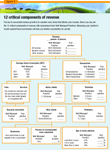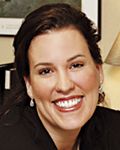Rev up your revenue
Raising fees isn't the only way to fuel revenue growth. Use these strategies to customize your revenue plan.
Peak revenue performance comes to those conscientious owners who tune and tweak their practices. They know that not every growth opportunity comes stock. Yet the strategies that afford maximum performance often aren't that expensive—or difficult to come by. They can be as straightforward as talking to team members during your next training meeting about how to reinforce your recommendations.

Of course, you could adjust your fees. (See "Focusing on Fees" in October 2005 for more.) Yet fees alone don't determine revenue growth. It's a web of interactive forces, involving your client numbers and retention, level of service, offerings, and more. Tweaking any one of these components can turbocharge growth.
For example, let's say you already perform all the services you recommend for your current clients and charge appropriately. If so, consider increasing your client base. Or maybe your new client numbers are phenomenal, but you can't keep pet owners around. In this case, you'll need to evaluate staffing levels and team members' effectiveness. Use these strategies and tools to tune up your approach—and give your practice more gas.
Attract more new clients
You want about 20 new clients per doctor per month in a stable community and 43 in a transitional community. To get new clients through the door, you'll need to boost community awareness of both your practice and pets' healthcare needs. For example, you could contribute to the local newspaper on animal wellness topics, speak to schools and local civic groups, or conduct lunch-and-learns where you visit a local business and talk to employees over a brown-bag lunch.
Of course, these ideas are just a place to get started—not a stopping point. Get your staff members involved, and give them a sense of ownership. Ask them to stir their creative juices and come up with their own ways to build the practice's reputation.
Curious about how adding new clients will affect your revenue? If your average doctor transaction is $130 and clients visit for medical care three times a year, adding 50 clients each year would increase your revenue by about $20,000.
Create value for clients
Once you attract new clients, you must create value to keep them. Steven Little, a business analyst, speaker, and consultant in Wilmington, N.C., tells a story about a seafood restaurant known for its oysters—and for the camaraderie of its wait staff. Diners felt welcome and relaxed, and the restaurant had become a gathering place. As the restaurant grew, it also expanded, hiring a new waiter whose main focus was to serve oysters as quickly as possible. After all, this was the restaurant's forte. And the new waiter turned tables faster than any waiter in the restaurant. Yet he failed to interact with his patrons. Attached to the friendly atmosphere they'd come to love, patrons stopped visiting, and the restaurant suffered.

Figure 1: 12 critical components of revenue
The problem: This restaurant didn't know what its clients really valued. Sure, the excellent oysters were important—or the restaurant wouldn't stay open. But other restaurants served excellent oysters, too. The friendly service made the difference.
Patient care is your oyster. You must deliver in this area—but when you do, it's not a guarantee that you'll see business growth. You must provide great service, too. As Little said in a session at AAHA! Baltimore 2005, "Veterinarians are in the people business."
To create value for people, find out what they want. For example, Dr. Randy Cottingham, owner of Kitty Hawk Animal Hospital in Universal City, Texas, surveyed his clients to learn what they expected besides great medicine. Top requests included a special room for euthanasia and an informative and educational Web site, all of which Dr. Cottingham plans to create. "The most surprising—and uplifting—thing we learned was how enthusiastic and supportive our clients are of our mission to provide high-quality care," Dr. Cottingham says.
Expand your services
Looking for untapped potential? You may want to offer a new service that will improve the health of your patients. Figure 2 lists areas you could explore.

Figure 2: Where the revenue comes from
Measuring compliance is another way to identify service areas you could improve. Consider dental prophylaxis. Many owners think their practices give most pets the care they need in this area. Yet "The Path to High-Quality Care," a compliance study published by AAHA and Hill's Pet Nutrition Inc. in July 2003, found that only 35 percent of dogs and cats with Grade 2 dental disease actually got the care they needed. So there's an opportunity to improve the standard of care for the other 65 percent. Aside from the obvious health benefits, this opportunity could represent a significant increase in revenue.
You can evaluate your compliance rates on dental prophylaxis by figuring out the number of patients you've diagnosed with Grade 2 disease and dividing that by the number that received the recommended care. Take that one step further to calculate your revenue potential by multiplying the untreated animals by the cost of your service. Use the same approach to determine compliance for other services.

The bottom line
Improve client compliance
Of course, getting from A to B isn't always easy. You'll encounter bumps. Still, if you follow these routes, you can boost clients' acceptance of your recommendations.
- Educate your staff members. Your staff members' involvement is vital. Include them in every step of the process, from determining your current compliance rates to setting goals and developing a game plan to achieve those goals.
When you talk to team members about compliance, don't forget to explain how the care improves pets' health and well-being. And after they understand your motivation, talk about how the increased revenue will affect the bottom line and potential reinvestment in the practice.
- Provide educational materials. Place reading materials or videos in the reception area that show before-and-after photographs of patients treated for dental problems. When you or your team members talk about dental health in the exam room, also hand out informative sheets to help clients remember what you discussed. Another way to reinforce your educational messages: Keep clients connected to the practice with a newsletter.
- Practice proactive scheduling. One key step: Ask staff members to schedule the pet's next appointment for recommended care at the end of the current visit. If the client can't schedule that day, call two or three days later. If the client still can't schedule, follow up with a written reminder. At the end of the visit, aim to schedule 80 percent to 90 percent of the care you recommend.
- Follow up on reminders. Don't assume that clients who haven't responded to your written reminders won't be back. Scheduling their pets' appointments is one more thing they must remember to do, and sometimes even the most conscientious owners get busy and forget. So make their lives just a little bit easier by calling them.
Practices that follow up on reminders typically reach a 25 percent to 30 percent scheduling rate or higher over time. And everyone benefits—the patient, the client, and the practice.

Measuring client satisfaction
Let's take a look at how a few changes translate into additional revenue for a practice. A two-doctor practice with 2,000 active clients decides to take steps to improve dental compliance. The patient age distribution shows that 30 percent of the patients are between 3 and 6 years old, and 43 percent of the patients are older than 6. With the staff and doctors' efforts to promote the benefits of healthy gums and teeth, an additional 400 patients receive a dental prophylaxis at an average charge of $350. Gross revenue increases $140,000.
Here's another scenario: Imagine the practice improves scheduling rates. Staff members schedule six-month exams for seniors and follow-up lab work for patients on long-term medications. Client medical visitation increases from two-and-a-half to three times per year. With an ADT of $130, revenue increases by $130,000.
Reaping the rewards
You can easily see how small tweaks in your revenue components can make a big difference in performance. And you may see several areas you could improve. So your first decision must be where to focus your attention.
While it may be tempting to try to tackle everything, that might not be your best option. Keep this piece of advice in mind from business analyst Ram Charan, author of Profitable Growth Is Everyone's Business: 10 Tools You Can Use Monday Morning (Crown Business, 2004): Gains should be small, consistent, and sustainable to be sensible; focusing on one area at a time will yield consistent improvement.
Some great news: You can see improvement even in a down market. You can grow revenue in good times and bad times. Even in a market loaded with competition, a practice can stand out. Differentiation is the key. When you look at each of these ways to grow revenue—attracting clients, creating value for them, expanding your services, and improving compliance—each of these avenues comes back to client service.
Do your team members offer above-average service with every client interaction? "If the client's expectations are met or exceeded each time they interact with us, then we'll start to build a sense of commitment. The bond is strengthened," says Dr. Michael Haas, co-owner of AVH Veterinary Group in Pen Argyl, Pa. "For each spectacular thing that we do, a thousand smaller acts maintain the bond. These tasks include smiling, using the client's name, having items in stock, and seeing appointments on time."
Such focus on personalized and attentive client interactions—coupled with excellent patient care, community outreach efforts, and compliance goals—paves a sure-fire path to growth. So explore and capture the revenue opportunities that exist in your practice and give yourself the best chance to accomplish your goals and dreams.

Jennette Rosier Lawson, CPA
Jennette Rosier Lawson, CPA, is a consultant, and Denise L. Tumblin, CPA, is co-owner and vice president of Wutchiett Tumblin and Associates, which produces the Well-Managed Practice Study in conjunction with Veterinary Economics. Send questions or comments to ve@advanstar.com